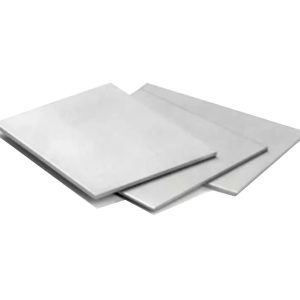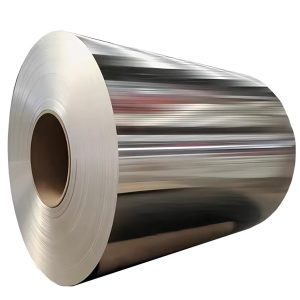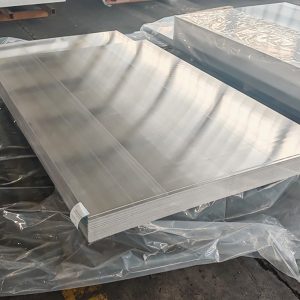
Introduction
In modern construction, durability, weight, and appearance are three critical considerations—especially in roofing and cladding. That’s where aluminum coil shines. Lightweight, corrosion-resistant, and highly formable, aluminum coil has become a material of choice for architects, builders, and roofing contractors around the world.
In this article, we’ll explore:
Why aluminum coil is ideal for roofing and cladding
Its key performance benefits
The most common grades used
How it’s applied across different building types
What to consider when selecting aluminum coil for your next project
Why Use Aluminum Coil for Roofing and Cladding?
Aluminum coil is processed into flat sheets or rolled panels that are used as exterior surfaces for buildings. It offers exceptional advantages compared to other traditional materials like steel or copper.
1. Lightweight Yet Strong
Aluminum is about 1/3 the weight of steel, which reduces structural load and makes installation faster and safer.
2. Corrosion Resistance
Naturally forms a protective oxide layer, making it ideal for coastal or industrial environments.
Resistant to UV rays, moisture, and air pollutants.
3. Aesthetic Versatility
Available in various surface finishes, including mill finish, anodized, PVDF coating, and pre-painted options.
Supports custom colors and embossing for architectural appeal.
4. Sustainability
100% recyclable without loss of properties.
Energy-efficient and eco-friendly choice for green buildings.
5. Long Lifespan with Minimal Maintenance
Aluminum roofing and cladding can last 30–50 years or more with little upkeep.
Common Aluminum Coil Grades for Roofing & Cladding
| Grade | Key Features | Typical Finish | Usage |
|---|---|---|---|
| 3003 | Excellent corrosion resistance, formable | Mill / Painted / Stucco | Residential & commercial roofs |
| 3105 | Good strength and weather resistance | Painted / Anodized | Wall cladding, roofing |
| 5052 | High strength, marine-grade corrosion resistance | PVDF / Anodized | Industrial roofs, curtain walls |
| 8011 | Good processing performance | Pre-painted | Ceiling panels, siding |
Note: All these alloys can be coated with PVDF, PE, or anodized finishes depending on design and environmental needs.
Learn more about our Aluminum solutions.
Applications of Aluminum Coil in Roofing and Cladding
1. Residential Roofing
Aluminum roofing panels are commonly used in modern homes for standing seam roofs, shingles, and tiles.
Lightweight panels are ideal for retrofits or replacing heavier materials.
2. Commercial and Industrial Buildings
Shopping malls, airports, warehouses, and factories use aluminum coils for:
Roof sheets
Wall panels
Facades
3. Curtain Wall Systems
High-rise buildings often use aluminum cladding for their curtain wall systems, offering sleek aesthetics and weatherproofing.
4. Modular Prefab Structures
Prefab homes and buildings rely on pre-painted aluminum coil for fast, durable, and low-maintenance cladding.
5. Rainwater Systems
Aluminum coil is also used in gutters, downpipes, and fascia boards for consistent look and corrosion resistance.
Comparison: Aluminum Coil vs Other Roofing Materials
| Feature | Aluminum Coil | Galvanized Steel | Copper |
|---|---|---|---|
| Weight | Very Light | Heavy | Moderate |
| Corrosion Resistance | Excellent | Requires coating | Excellent |
| Recyclability | 100% | Partial | 100% |
| Aesthetics | Versatile | Limited | Premium |
| Cost | Moderate | Low | High |
| Lifespan | 30–50 years | 10–30 years | 50+ years |
How to Choose the Right Aluminum Coil for Roofing or Cladding
When selecting aluminum coil, consider the following:





FAQs About Aluminum Coil for Roofing & Cladding
Q: Is aluminum coil suitable for high-rainfall or coastal areas?
A: Yes. Its corrosion resistance makes it ideal for humid, rainy, and marine environments.
Q: How long does aluminum roofing last?
A: Typically 30–50 years, especially with PVDF coatings or anodized finishes.
Q: Can aluminum roofing be painted?
A: Yes. Pre-painted aluminum coils with PVDF or PE coatings offer long-lasting color and protection.
Q: Is aluminum coil more expensive than steel?
A: While aluminum has a higher initial cost, its longevity and lower maintenance often make it more cost-effective long term.
Q: Can aluminum coil be recycled?
A: Absolutely. It’s 100% recyclable with no degradation in quality.
Conclusion
Aluminum coil is a top-tier solution for roofing and cladding in both residential and commercial applications. Its lightweight nature, corrosion resistance, and visual flexibility make it a favorite among builders, architects, and developers seeking high-performance, sustainable building materials.
Contact Us for Aluminum Coil Supply
Gengfei Steel – Your Reliable Aluminum Coil Supplier
Email: [email protected]
WhatsApp / Phone: +86 191 3986 3252
Website: www.gengfeisteel.com
Gengfei Provides High Quality Aluminum
Please let us know your procurement requirements, and we will quickly tailor the most competitive quotation for you.
- [email protected]
- +86 19139863252
- Jenny-GFSteel











